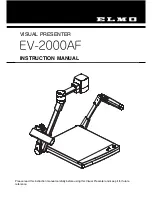
Appendix
A-6
MPS (Multi-Page Signal)
It is used at the end of transmission of images for a single page and, in addition, there is
another document to be transmitted in a same mode of transmission. After transmission of
MPS, the next page will be transmitted immediately in response to MCF from the other
party.
PRI-Q (Procedure Interrupt-Q)
Those signals used to indicate that the operator may be called at the end of transmission
of images for a single page (PRI-EOP, PRI-EOM, PRI-MPS) are at times generically
called PRI-Q.
PRI-EOP (Procedure Interrupt-EOP)
It has the same meaning as EOP, indicating that the operator may be called. In the case of
a facsimile machine without a talk reservation function, it is treated as EOP.
PRI-EOM (Procedure Interrupt-EOM)
It has the same meaning as EOM, indicating that the operator may be called. In the case of
a facsimile machine without a talk reservation function, it is treated as EOM.
PRI-MPS (Procedure Interrupt-MPS)
It has the same meaning as MPS, indicating that the operator may be called. In the case of
a facsimile machine without a talk reservation function, it is treated as MPS.
SUB (subaddress)
In address-specific transmission, it is used to send an address including the location of
memory box in the other party.
SID (Sender ID)
In address-specific transmission, it is used to send a password (if a password is imposed
on the memory box of the other party; otherwise, it will not be transmitted). In the case of
a Canon facsimile machine, SID is sometimes expressed as PWD or T-PWD in relation to
system dump lists or service error transmission reports.
2.5 Signals Transmitted by the Receiver
CED (Called Station Identification)
It is a tone signal used to inform the other party that the machine is an auto-reception
facsimile machine.
NSF (Non-Standard Facilities)
It is for an ITU-T recommendation non-standard function (not part of DIS and a function
unique to a specific manufacturer) and is used to inform the other party of the modes of
reception that may currently be used. It is an ITU-T non-standard function signal, and
includes a user name and maker code.
CSI (Called Subscriber Identification)
It is used to indicate to the other party the telephone number of the receiver.
DIS (Digital Identification Signal)
It is for an ITU-T recommendation standard function, and is used to inform the other
party of the modes of reception that may currently be used. It is an ITU-T standard func-
tion, and indicates the size of recording paper, speed of transmission, MTT, method of
coding, and recording resolution.
Summary of Contents for PowerShot G3
Page 12: ...Introduction X This page intentionally left blank ...
Page 13: ...Chapter 1 User Error Codes ...
Page 58: ...Chapter1 User Error Codes 1 45 Cause Remedy Cause Remedy ...
Page 59: ...Chapter1 User Error Codes 1 46 Cause Remedy Cause Remedy ...
Page 60: ...Chapter 2 Service Error Codes ...
Page 275: ...Chapter 2 Service Error Codes 2 215 Cause Remedy Cause Remedy ...
Page 276: ...Chapter 2 Service Error Codes 2 216 Cause Remedy Cause Remedy ...
Page 277: ...Appendix ...
Page 310: ...0901 AT CANON INC ...















































